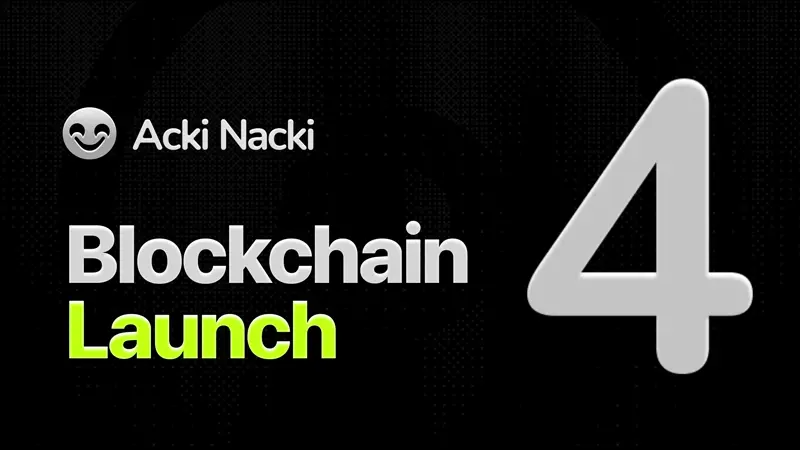1. Why Acki Nacki’s Probabilistic PoS Is the First True Parallel Consensus for Web3
Every couple of years, someone yells “revolution” in blockchain town. Usually, it’s a louder fork or a shinier token. But Acki Nacki is neither. It’s a protocol designed to speak a new grammar to a decentralized world tired of repeating the same sentences.
And at the core of this new language is Probabilistic Proof of Stake (PPoS), Mitja Goroshevsky’s attempt to solve the core paradox of PoS systems: how to scale trust, not just block size.
Traditional PoS systems are like long, single-lane roads. Efficient, yes, but when traffic jams hit (congestion, validator downtime, bad actors), everything backs up.
Finality suffers.
Acki Nacki builds a multi-lane highway. Its PPoS model isn’t linear; it’s probabilistic and parallel. It doesn’t wait for validators to agree one by one. It assumes partial agreement in real-time across multiple roles, and lets blocks finalize across independent, probabilistically intersecting pathways.
Instead of a monolithic consensus ceremony, you get an orchestra of micro-decisions. Block Producers create. Block Keepers retain. Verifiers judge. Managers oversee. Each role contributes asynchronously, like microservices in a cloud-native stack. No one actor holds the baton; the protocol balances probability with redundancy, speed with safety.
This architecture gives us true parallelization. Acki Nacki can finalize multiple blocks concurrently without relying on L2 kludges or recursive ZK rollups. It’s a horizontal scaling layer baked directly into L1. Think of Ethereum as a line of monks copying books by hand. Acki Nacki is a swarm of scribes with AI spellcheck.
“Finality in Acki Nacki is not a moment; it’s a waveform. Multiple forks collapse into a consensus superposition.” — paraphrasing Mitja in his lecture on probabilistic systems.
That might sound like techno-babble until you realize: in Acki Nacki, you don’t wait for 12 confirmations.
You get enough of them from enough participants across enough roles, and the network moves forward now.
This isn’t about zero-confirmation gambling. It’s about achieving computational consensus through parallel probability resolution.
2. The mind of a Block Keeper: Modeling network behavior through game theory
To understand Acki Nacki, you have to think less like a miner and more like a systems engineer with a mild god complex. The network isn’t just processing blocks. It’s simulating behavior: incentives, game loops, sybil resistance, and asymmetrical cooperation.
There are five roles:
-
Block Producer (creates)
-
Block Keeper (stores)
-
Block Verifier / Acki-Nacki (validates)
-
Block Manager (coordinates and rewards)
-
Mobile Verifier (checks on the fly)
Each role is incentivized differently, and each contributes differently to the network’s resilience. The beauty lies in the redundancy and role separation. You don’t get to play God; you get to play your part. And if you screw it up, someone else takes over.
The entire system is a behavioral model wrapped in cryptography. Block Keepers, for example, are semi-trusted archivists incentivized to store state histories and share them upon request. But they don’t do this out of charity. They do it because they get paid to not be lazy, and punished if caught slacking.
“If you want honest behavior, make honesty the most rational choice.” — from Mitja’s GitHub notes on system incentives.
Keepers and Verifiers are modeled as game-theoretic actors. They get rewarded for correct behavior but punished probabilistically for collusion or downtime. Sybil resistance doesn’t come from one central gatekeeper but from a mesh of conditional game loops: you act right because it’s statistically the best survival strategy.
When someone cheats, the system doesn’t scream. It adjusts. Reputation scores drop. Validator slots reshuffle.
The attacker wastes stake and time.
It’s not just about catching bad behavior; it’s about making bad behavior not worth it.
And if this feels familiar, that’s because it’s how real-world systems self-regulate. Traffic laws, classroom dynamics, even nature. Survival of the fittest isn’t about brute force. It’s about cooperative advantage. Acki Nacki, underneath the math, is a protocol that understands human nature and plays it like a piano.
3. Self-Healing protocols: What Acki Nacki learned from Bitcoin, TON, and Ethereum
Let’s be honest. Every blockchain in existence is built on the broken dreams of the one before. Bitcoin was elegant but slow. Ethereum was flexible but congested. TON was ambitious but drowned in its own complexity.
Acki Nacki looked at all three and said: fine, we’ll borrow your strengths and leave your mess.
From Bitcoin, it borrow the principle of economic fairness. The labor theory of value. The idea that protocol rewards should reflect effort. Instead of mining blocks, you validate them. Instead of electricity, you spend time and computation. Shell tokens represent your labor. This isn’t airdrop season. It’s the gig economy on-chain.
From Ethereum, it borrow smart contract architecture and composability. But it ditched gas fees as the only signal. Acki Nacki separates security economics from utility economics. NACKL is your stake in protocol integrity. SHELL is your currency for doing stuff. Two tokens. Two economies. Fewer surprises.
And from TON, it took the idea of concurrent execution. But where TON turned that into a spaghetti mess of sharded chaos, Acki Nacki made it modular. Roles are pluggable. Validation is layered. Coordination happens in soft consensus rounds.
And here’s the kicker: it heals itself.
When a Block Keeper goes offline, others step in. When too many Verifiers slouch, their weight drops, and newer nodes get chances. The network doesn’t beg for restarts. It mutates toward equilibrium.
“Acki Nacki is not a blockchain. It’s a living system.”
Every failure is just a fork of potential behaviors. Most die off. The right ones survive. And that’s the whole point.
From protocol to philosophy
I’ve been around long enough to know hype when I see it. Acki Nacki isn’t hype. It’s weird. It’s complex. It makes you feel dumb, then curious, then obsessed.
It doesn’t promise lambos or layer-69 throughput. It promises a system where failure isn’t fatal. Where consensus isn’t about shouting louder but listening better. Where every participant, from node to mobile verifier, has a part to play in the game of trust.
Acki Nacki isn’t just a better blockchain. It’s a mirror held up to the messiness of collaboration. And it says: what if our networks were built like we live? Probabilistic. Parallel. Resilient.
Maybe that’s the real future.
And maybe, just maybe, it starts here.





